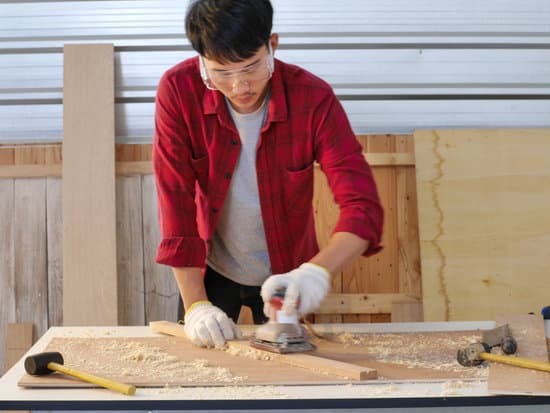Poor cell phone reception at home can be frustrating and inconvenient, impacting everything from simple everyday communication to critical emergency situations. In this article, we will explore the various factors that affect cell phone reception, and provide a comprehensive guide on how to improve it. Whether it’s making important business calls or staying connected with loved ones, understanding how to improve cell phone reception at home is crucial for maintaining seamless communication.
Understanding the reasons behind weak cell phone signal is the first step toward finding a solution. Factors such as building materials, distance from cell towers, and interference can all contribute to poor reception. By conducting a signal strength test at home using a smartphone or signal strength app, individuals can pinpoint areas with the weakest signal and begin addressing the problem.
One effective solution for improving cell phone reception is selecting the right cell phone signal booster. This article will guide readers through the different types of boosters available in the market and help them choose the most suitable option for their specific needs.
Additionally, we will provide detailed instructions on installing and positioning the signal booster for maximum effectiveness. By following these steps, individuals can improve their cell phone reception at home and ensure reliable connectivity for all their communication needs.
Understanding the Factors Affecting Cell Phone Reception
Having a good cell phone reception at home is essential for staying connected with family, friends, and colleagues. It is also crucial during emergencies when immediate communication is necessary. Poor cell phone reception can lead to dropped calls, missed messages, and frustration. Understanding the factors that affect cell phone reception can help in finding the right solutions to improve it.
Several factors can contribute to weak cell phone signals at home. One of the most common reasons is the type of building materials used in the construction of the house. Materials like concrete, metal, and low-e glass can block or weaken cell phone signals.
Additionally, the distance from nearby cell towers and physical obstructions such as hills or tall buildings can also impact signal strength. In some cases, electronic devices and appliances within the house can cause interference, further degrading cell phone reception.
To determine which factors are affecting cell phone reception at home, conducting a signal strength test using a smartphone or signal strength app is recommended. This test helps identify areas with poor signal coverage within the house and assists in deciding on an appropriate solution.
| Factor | Effect on Cell Phone Reception |
|---|---|
| Building Materials | Concrete, metal, low-e glass can block or weaken signals |
| Distance from Cell Towers | Closer proximity to towers leads to stronger signals |
| Interference from Devices/Appliances | Electronic devices and appliances may disrupt signals |
In order to address these issues effectively, it is important to consider choosing the right cell phone signal booster tailored to specific needs based on these identified factors influencing poor reception at home.
Conducting a Signal Strength Test at Home
When looking to improve cell phone reception at home, it is essential to first understand the current signal strength in different areas of the house. Conducting a signal strength test can help identify the areas with the weakest signal, allowing for targeted solutions to be implemented.
Step-by-Step Guide for Signal Strength Test
Begin by accessing the settings on your smartphone and navigating to the “About Phone” or “General” section, depending on the type of device. Look for the option that allows you to check the signal strength (measured in dBm or bars) and record the results.
After checking the signal strength inside your home, move to different rooms and areas where you spend most of your time, such as bedrooms, living room, kitchen, and home office. Repeat the process of measuring and recording the signal strength in each location.
By conducting a comprehensive signal strength test throughout your home, you will have a clear understanding of where weak spots are located. This information will be invaluable when it comes to choosing and installing a suitable cell phone signal booster.
Using Signal Strength Apps
For those who prefer a more detailed analysis of their cell phone reception at home, various signal strength apps are available for download on both Android and iOS devices. These apps provide real-time data on signal strength, connection quality, and network latency, allowing users to pinpoint specific areas that require improvement. Simply search for “signal strength meter” or “network analyzer” in your app store to find options that best fit your needs.
By conducting a thorough signal strength test at home using either your smartphone’s built-in feature or dedicated apps, you will be well-equipped to take informed steps towards improving cell phone reception in your living space.
Choosing the Right Cell Phone Signal Booster
When it comes to improving cell phone reception at home, one of the most effective solutions is investing in a cell phone signal booster. These devices are designed to amplify and improve cellular signals, providing better voice quality and faster data speeds within your home. However, with a variety of signal boosters available in the market, it’s important to choose the right one that suits your specific needs.
Types of Signal Boosters
There are different types of cell phone signal boosters available, including in-home and multi-user options. In-home signal boosters are suitable for smaller residential spaces, while multi-user signal boosters are designed to provide improved coverage for larger homes or multiple floors.
Considerations for Selection
When choosing a signal booster, consider factors such as the size of your home, the carrier you use, and the specific areas where you experience poor reception. It’s important to ensure that the booster is compatible with your carrier’s frequency bands to provide optimal performance.
Researching and Comparing Options
Before making a purchase, research and compare different signal booster models from reputable brands. Look for customer reviews and ratings to understand the real-world performance of the booster. Additionally, check for warranty and return policies to have peace of mind with your investment.
By carefully selecting the right cell phone signal booster for your home, you can effectively address poor reception issues and enjoy seamless communication and connectivity throughout your living space.
Installing and Positioning the Signal Booster for Maximum Effectiveness
Once you have chosen the right cell phone signal booster for your home, the next step is to properly install and position it for maximum effectiveness. The location of the signal booster plays a crucial role in improving cell phone reception throughout the house. It is important to find a central location where the booster can cover the entire area without any obstructions.
When installing the signal booster, make sure to follow the manufacturer’s instructions carefully. This may involve mounting an external antenna outside to receive the existing signal and an internal antenna to broadcast the boosted signal within the house. It is essential to position these antennas in a place where they can effectively communicate with each other without any interference.
In addition, it is important to consider potential obstructions that could affect the performance of the signal booster. Objects such as large metal surfaces or electronic devices can interfere with the signals, so it is best to keep these away from the antennas. By positioning and installing the signal booster correctly, you can ensure that you are getting maximum effectiveness and improved cell phone reception throughout your home.
Optimizing Wi-Fi Calling and Voice Over Internet Protocol (VoIP) Options
Switching to alternative methods of making calls and sending texts over a Wi-Fi network can be a game-changer when it comes to improving cell phone reception at home. Wi-Fi calling allows users to make calls and send texts using their existing cellular number, but through a Wi-Fi connection instead of relying solely on the cellular network.
Voice over Internet Protocol (VoIP) options, on the other hand, use the internet to make voice and video calls, as well as send messages, without using traditional telephone lines.
One of the advantages of optimizing Wi-Fi calling and VoIP options is the ability to seamlessly switch between cellular and Wi-Fi calling based on signal strength. When connected to a strong Wi-Fi network, using these alternatives can significantly reduce dependence on a weak cellular signal, leading to clearer calls and better overall communication. Additionally, utilizing these options can also help conserve cellular data usage if chosen as the primary method of communication while at home.
To take full advantage of Wi-Fi calling and VoIP options, it’s essential to ensure that the available Wi-Fi network at home is reliable and has strong coverage throughout the entire house. This might involve optimizing the placement of routers or access points, upgrading to a more advanced router with extended coverage capabilities, or investing in a mesh Wi-Fi system for comprehensive coverage.
By addressing any potential issues with the home Wi-Fi network, users can maximize the effectiveness of utilizing these alternatives for improved cell phone reception.
Reducing Interference and Distracting Signals
When attempting to improve cell phone reception at home, it is crucial to address any interference or distracting signals that may be impacting the strength of the signal. Here are some tips on reducing interference:
- Minimize the use of electronic devices and appliances in close proximity to where you typically use your cell phone. Some devices, such as cordless phones, Bluetooth speakers, and microwaves, can cause interference with your cell phone signal.
- Check for any metal structures or materials within your home that may be obstructing the signal. Metal roofs, aluminum insulation, and even metallic window screens can significantly affect cell phone reception.
- Consider relocating your Wi-Fi router if it is positioned near the area where you face poor cell phone reception. Wi-Fi signals can sometimes interfere with cellular signals, so finding an optimal location for the router can help improve both connections.
By minimizing interference from electronic devices and addressing any potential obstructions caused by metal structures or materials within the home, you can significantly improve your cell phone reception. Taking these steps will ensure a clearer and more reliable connection for all of your communication needs.
Considering Professional Services and Additional Solutions
When all other methods have been exhausted and the problem of poor cell phone reception at home persists, seeking professional assistance may be the best option. There are experts in the field who specialize in analyzing and improving cell phone signal strength in residential areas. Here are some additional solutions to consider when dealing with persistent signal issues:
- Consulting with a Professional: In some cases, it may be necessary to consult with a professional service provider specializing in cellular signal improvement. These professionals can conduct a thorough assessment of the home environment and recommend tailored solutions to improve cell phone reception.
- External Antenna Installation: For homes located in areas with extremely weak cellular signals, an external antenna installation might be necessary. These antennas can be mounted on rooftops or other high points, receiving and amplifying weak signals from nearby cell towers.
- Upgrading to a Compatible Smartphone: Older smartphones may not support the latest technologies for improved signal reception. Upgrading to a newer model that is compatible with advanced network technologies can significantly enhance cellular connectivity at home.
In addition to considering professional services, it is important for homeowners to stay informed about any new developments or advancements in cellular technology that could further enhance signal strength within their residences.
Maintaining and Troubleshooting Cell Phone Reception Improvements
In conclusion, having good cell phone reception at home is essential for staying connected with loved ones, being reachable in times of emergency, and even for working remotely. Understanding the factors affecting cell phone reception and conducting a signal strength test at home are crucial first steps in improving reception. Choosing the right cell phone signal booster and installing it in the optimal location can make a significant difference in signal strength.
Additionally, optimizing Wi-Fi calling and VoIP options can provide an alternative means of communication when cellular reception is poor. Reducing interference from electronic devices and metal structures around the house can also help improve cell phone reception. Considering professional services or additional solutions may be necessary for those experiencing persistent issues with cell phone reception.
Once improvements have been made, it’s important to maintain and troubleshoot them regularly to ensure continuous effectiveness. By following these steps and taking proactive measures, individuals can significantly enhance their cell phone reception at home, ultimately improving their overall communication experience.
Frequently Asked Questions
How Can I Make My Phone Signal Stronger at Home?
There are a few ways to make your phone signal stronger at home. One option is to use Wi-Fi calling if your phone and carrier support it.
Additionally, you can try positioning your phone closer to a window or in an elevated area to improve signal reception. Another option is to invest in a cell phone signal booster, which can amplify the existing signal within your home.
Do Cell Phone Signal Boosters Really Work?
Yes, cell phone signal boosters do work in improving the strength of your mobile phone signal. These devices are designed to capture existing cellular signals outside of your home or office, amplify them, and then broadcast the stronger signal inside. This can result in improved call quality, faster data speeds, and increased coverage area within the boosted space.
How Can I Boost My Mobile Phone Signal?
Boosting your mobile phone signal can be achieved through various methods. For instance, you can try switching your phone to airplane mode for a few seconds and then back again to force it to reconnect to the nearest cell tower.
You can also consider using Wi-Fi calling or investing in a cell phone signal booster for more reliable and consistent coverage at home or in the office. Additionally, clearing obstructions around your location or adding an external antenna to your device may help improve signal strength as well.

I’m thrilled to have you here as a part of the Remodeling Top community. This is where my journey as an architect and remodeling enthusiast intersects with your passion for transforming houses into dream homes.





